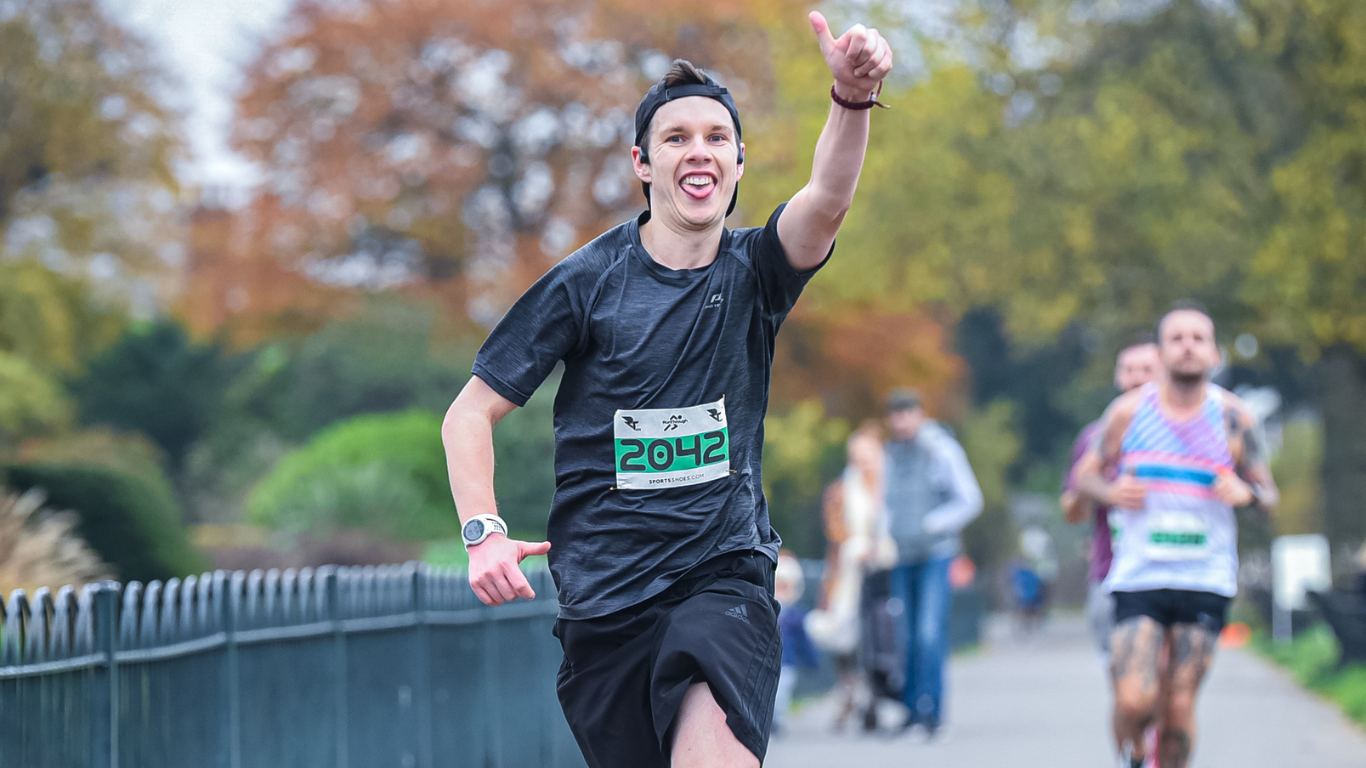Preparing for a 10K run is an exciting challenge that many runners look forward to. Whether you are a beginner or have some experience, understanding the right steps to take can make a big difference in your performance on race day. With the right preparation, you can build endurance, improve your running skills, and feel confident on the course.
Setting goals and developing a training plan are essential parts of getting ready for a 10K. Taking the time to learn about various training strategies and tips will help you get the most out of your effort. Each runner has unique needs, and exploring helpful advice can guide you in your journey toward your race.
1) Start with a solid training plan
To prepare for a 10K run, having a solid training plan is essential. A good plan provides structure and helps you gradually improve your fitness.
Begin by setting a clear timeline, like 7 weeks, to train. This time frame allows enough time for your body to adapt.
Include different types of runs in your schedule. These can be long runs, tempo runs, and easy recovery runs. Each type serves a specific purpose in building your endurance and speed.
Make sure your training plan includes rest days. Rest is crucial for recovery and helps prevent injuries.
Consider your current fitness level when choosing a plan. If you are a beginner, start with shorter distances and gradually increase your mileage as you progress.
Stay consistent with your training. Regular practice will help build your confidence and prepare you for race day.
With a solid training plan, you’ll be on the right path to achieving your 10K goals.
2) Incorporate interval training
Interval training is a key way to boost your speed and endurance for a 10K run. This type of training involves alternating between high-intensity bursts and recovery periods.
For example, you can sprint for 30 seconds and then jog or walk for one to two minutes. Repeat this cycle several times during your workout.
Incorporating intervals helps your body adapt to faster paces. It also improves your aerobic capacity, which is important for longer races like the 10K.
Aim to include interval training in your weekly routine. Start with one session each week, and gradually increase as you feel more comfortable.
Mix different types of intervals, such as hill sprints or track repeats. Each variation offers unique benefits and challenges your body in new ways.
Listen to your body and ensure you recover properly after intense workouts. This balance will help you gain speed without risking injury.
3) Focus on proper nutrition
Proper nutrition is key to performing well in a 10K run. Eating the right foods gives your body the fuel it needs. Carbohydrates are especially important. They provide energy for your muscles.
The night before your race, have a meal that is rich in carbs. Foods like pasta, rice, or bread are good choices. This helps to store energy for the run.
On race day, eat a light breakfast 1-2 hours before you start. A banana with peanut butter or a piece of toast can work well. These foods are easy to digest and give you lasting energy.
Stay hydrated. Drink water or a sports drink before the run. This ensures your body is ready and helps with focus. Check your urine color; a light yellow means you are well-hydrated.
After the race, replenish your energy. A mix of carbs and protein is best for recovery. Foods like a smoothie or a protein bar can help your body recover faster.
4) Stay hydrated
Staying hydrated is crucial for your 10K performance. Begin drinking water regularly in the days leading up to the race. This helps ensure you are well-hydrated on race day.
On the day of the race, drink enough water before you start. Aim for about 17-20 ounces a few hours before running. This will prepare your body for the distance ahead.
During the run, listen to your body. Drink water at water stations if you feel thirsty. For a 10K, plain water is often enough, especially if the weather is mild.
If it’s hot or humid, you may need to drink more frequently. Adjust your fluid intake based on your needs and the weather conditions. Managing your hydration can help improve your stamina and performance.


5) Get enough sleep
Sleep is crucial when preparing for a 10K run. It allows your body to recover and repair itself after training. Lack of sleep can affect your performance and increase your risk of injury.
Aim for seven to nine hours of quality sleep each night. This helps your muscles recover and keeps your mind sharp. Stay consistent with your sleep schedule, even on weekends.
In the days leading up to the race, prioritize rest. Your body needs time to recharge. Avoid late-night activities that can disrupt your sleep.
You might want to create a calming bedtime routine. Simple habits, like reading or stretching, can signal to your body that it’s time to wind down. Also, keep your sleeping environment dark, quiet, and cool for better sleep quality.
Naps can be helpful, too. A short nap can boost your energy and focus, especially if you didn’t sleep well the night before. Just keep naps brief to avoid grogginess.
Getting enough sleep is an important part of your training plan. Make it a priority to support your running goals.
6) Invest in quality running shoes
Choosing the right running shoes is essential for your 10K training and race day. Good shoes provide support and cushioning, which help prevent injuries.
Look for shoes that fit well. They should be snug but not tight. Your toes should have some room to move. It’s a good idea to try on shoes at the end of the day when your feet are slightly swollen.
Consider your running style and foot type. Some people have flat feet, while others have high arches. Each foot type may benefit from different shoe designs.
Research options before buying. Many running experts and guides recommend specific models. Popular choices often mention comfort and performance.
Finally, don’t forget to replace your shoes when they wear out. Running in old shoes can lead to injuries. Aim to change them every 300 to 500 miles.
7) Practice pacing strategies
Pacing is key to a successful 10K run. It can make the difference between finishing strong or struggling toward the end.
Start by deciding on a pacing strategy that suits you. Common approaches include running at an even pace throughout the race or using a negative split, where you run the second half faster than the first.
You can practice these strategies during your training runs. For instance, try running the first half at a comfortable pace and then gradually increase your speed in the second half. This will help you understand your limits.
Use a running watch or app to track your pace. This tool helps you stay on target during training and on race day.
You can also divide your run into segments. Focus on maintaining a steady pace for the first part, then pick it up during the middle, and finish strong in the end.
Lastly, listen to your body. If you feel strong, you can push the pace. If fatigue sets in, adjust accordingly to avoid burnout. Practicing pacing strategies will help you feel more confident as race day approaches.
Understanding the 10K Run
The 10K run is a popular race distance that challenges both new and experienced runners. Its history and health benefits offer important insights into why this race is a great choice for many.
The History of 10K Races
The 10K race has roots in the mid-20th century, evolving from various shorter distance races. It gained popularity as road racing expanded, especially in the 1970s during the running boom. The distance, which is about 6.2 miles, is ideal for many runners because it is long enough to provide a challenge but not so long that it demands extensive training like a half-marathon.
Major cities around the world host annual 10K races, attracting thousands of participants. Events such as the 10K often serve as a gateway to longer races, allowing runners to build stamina and confidence. With its growing acceptance as an Olympic event, the 10K continues to encourage runners of various fitness levels to participate.
Health Benefits of Running a 10K
Participating in a 10K can significantly boost your physical and mental health. Here are some key benefits:
- Improved Cardiovascular Fitness: Training for a 10K strengthens your heart, allowing it to pump blood more efficiently.
- Increased Stamina: Regular training builds your endurance, making everyday activities easier.
- Weight Management: Running burns calories, helping you maintain or lose weight.
- Mental Well-being: The discipline of training and the thrill of race day contribute to better mood and reduced stress levels.
In addition, training for a 10K promotes a healthy routine, encouraging you to engage in cross-training and proper nutrition. This holistic approach can lead to lasting lifestyle changes.
Training Strategies for Success
Training effectively for a 10K run involves building endurance and incorporating speed workouts. These strategies will help you improve your performance and achieve your goals.
Building Endurance Over Time
Start by gradually increasing your weekly mileage. Aim for 10% more each week, which helps prevent injury while building stamina. Follow a structured plan that peaks with a long run of about 6-8 miles.
Incorporate a mix of easy runs, long runs, and rest days into your schedule. For example:
- Easy Runs: 3-5 miles at a comfortable pace.
- Long Runs: Once a week, add a distance that feels challenging yet manageable.
- Rest Days: Allow your body to recover.
Make sure to listen to your body. If you feel overly fatigued, take an extra rest day. Hydration, nutrition, and sleep are also crucial for building endurance.
Incorporating Speed Workouts
Speed workouts are essential for improving your race pace and overall performance. Start including them in your training after you build a solid endurance base. Here are some effective speed workout types:
- Interval Training: Alternate between high-intensity sprints and recovery periods. For example, sprint for 1 minute, then walk or jog for 2 minutes. Repeat this cycle several times.
- Tempo Runs: These are steady runs at a pace that feels “comfortably hard.” Start with 20 minutes of tempo running, gradually increasing to 30-40 minutes as you improve.
- Fartlek Training: This is a fun way to incorporate speed into your runs. Vary your pace throughout a session by sprinting between landmarks, like trees or streetlights.
These workouts improve your speed and help you become a more efficient runner. Be consistent, and pay attention to your recovery between these workouts for the best results.
Frequently Asked Questions
Preparing for a 10K run involves thoughtful planning and execution. Here are common questions and their answers to help you feel ready for race day.
What is the best training plan for a 10K run for beginners?
For beginners, a 6-week training plan is recommended. Start with 3 to 4 days of running each week. Gradually increase your distance to include some longer runs. Incorporate walk/run intervals if needed and try to build up to running the full 10K distance by the end of the plan.
What are the key strategies to prepare for a 10K run in under two weeks?
In the final two weeks, focus on shorter runs that maintain your fitness level. Include a variety of speeds, like interval training, but avoid pushing too hard. Prioritize rest, recovery, and nutrition to ensure you’re in peak condition.
How should I taper my training the week before a 10K run?
In the week before the race, reduce your mileage by about 20-30%. Keep the runs short and maintain some intensity, but avoid long sessions. This tapering helps your body recover before the race, so you feel fresh on race day.
What are essential nutrition tips for the days leading up to a 10K race?
Eat balanced meals with an emphasis on carbohydrates to fuel your energy stores. Include lean proteins and healthy fats in your diet. Stay hydrated, especially in the days leading up to the race, to ensure your body is well-prepared.
How can I optimize my performance for a 10K without prior training?
If you’re starting without a solid training background, focus on nutrition and hydration. Walk or jog short distances to get your body used to movement. On race day, pacing yourself will be crucial. Start slow to conserve energy for later in the race.
What are crucial last-minute preparation tips for the day before a 10K run?
The day before the race, keep your activities minimal to conserve energy. Lay out your gear, including shoes and clothing, to avoid last-minute stress. Stay hydrated and follow your regular meals without introducing new foods that could upset your stomach.





